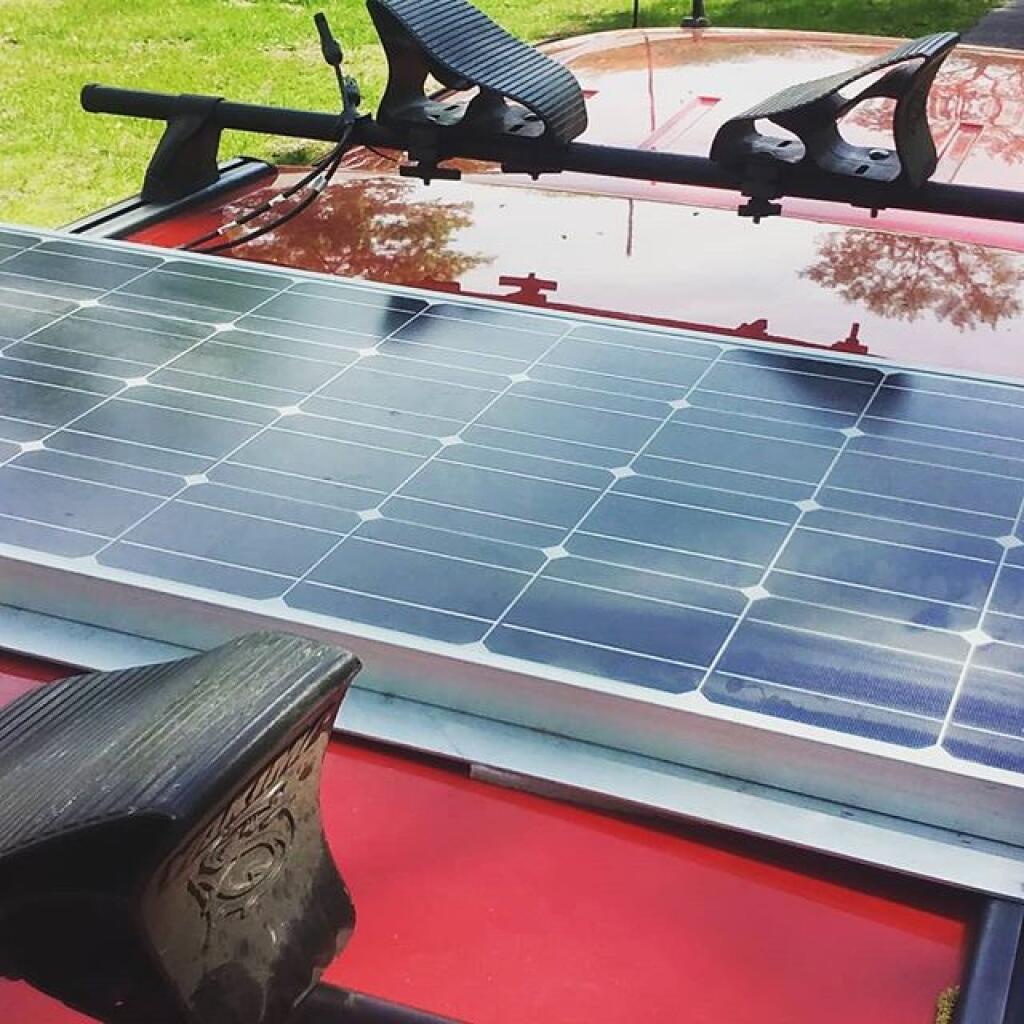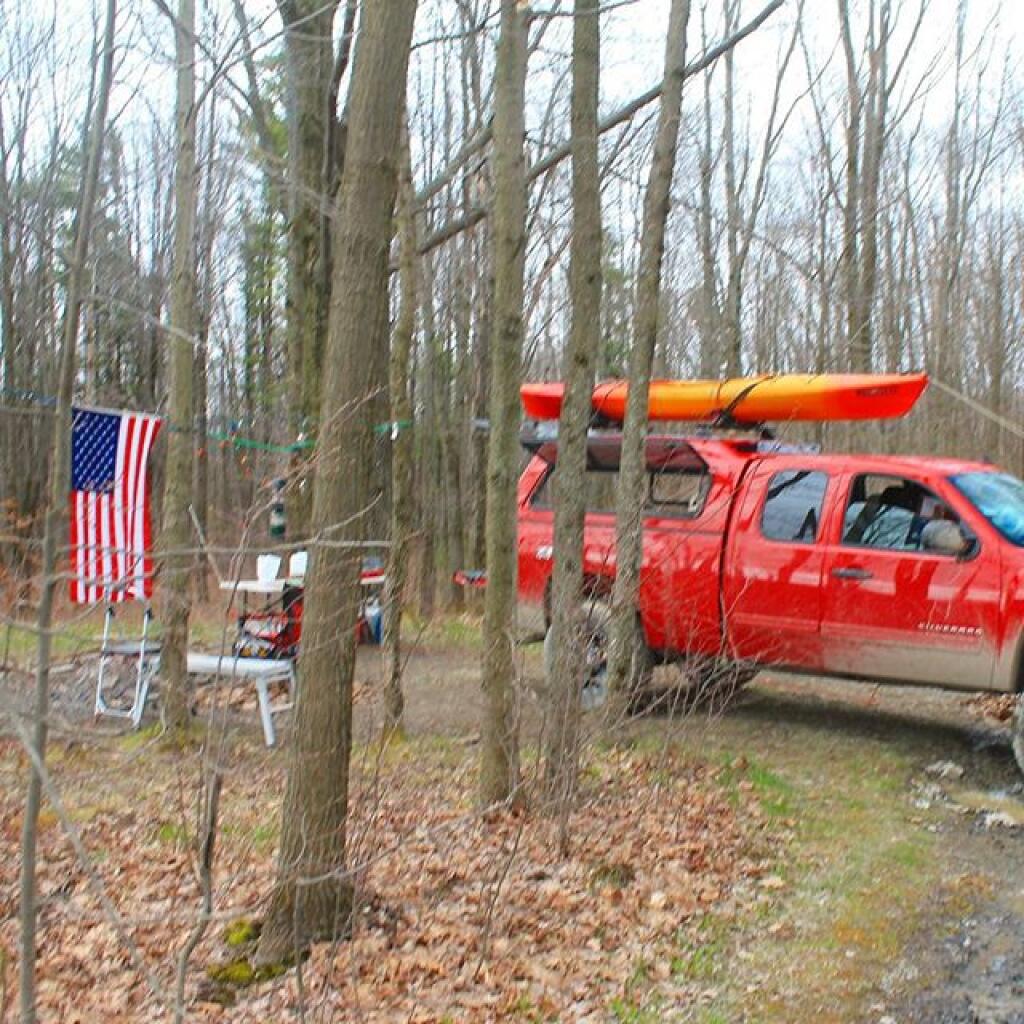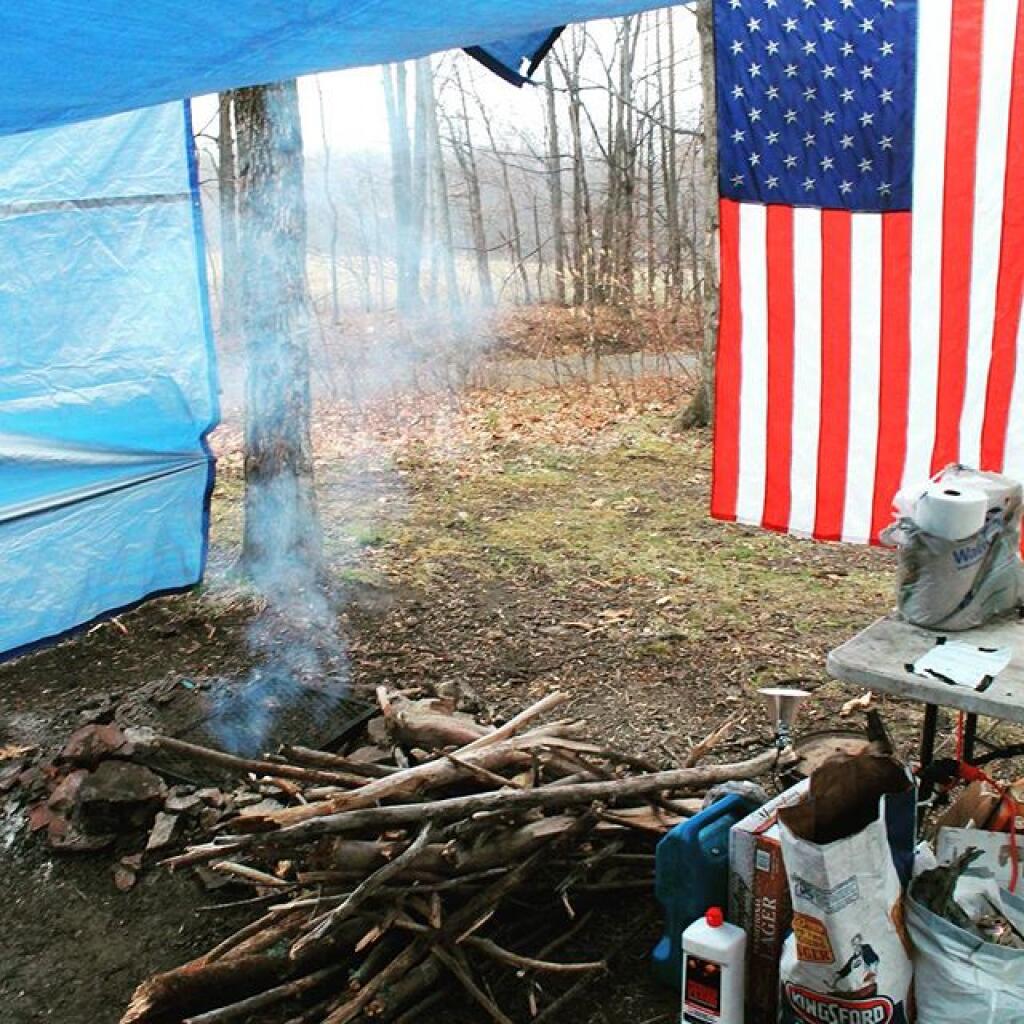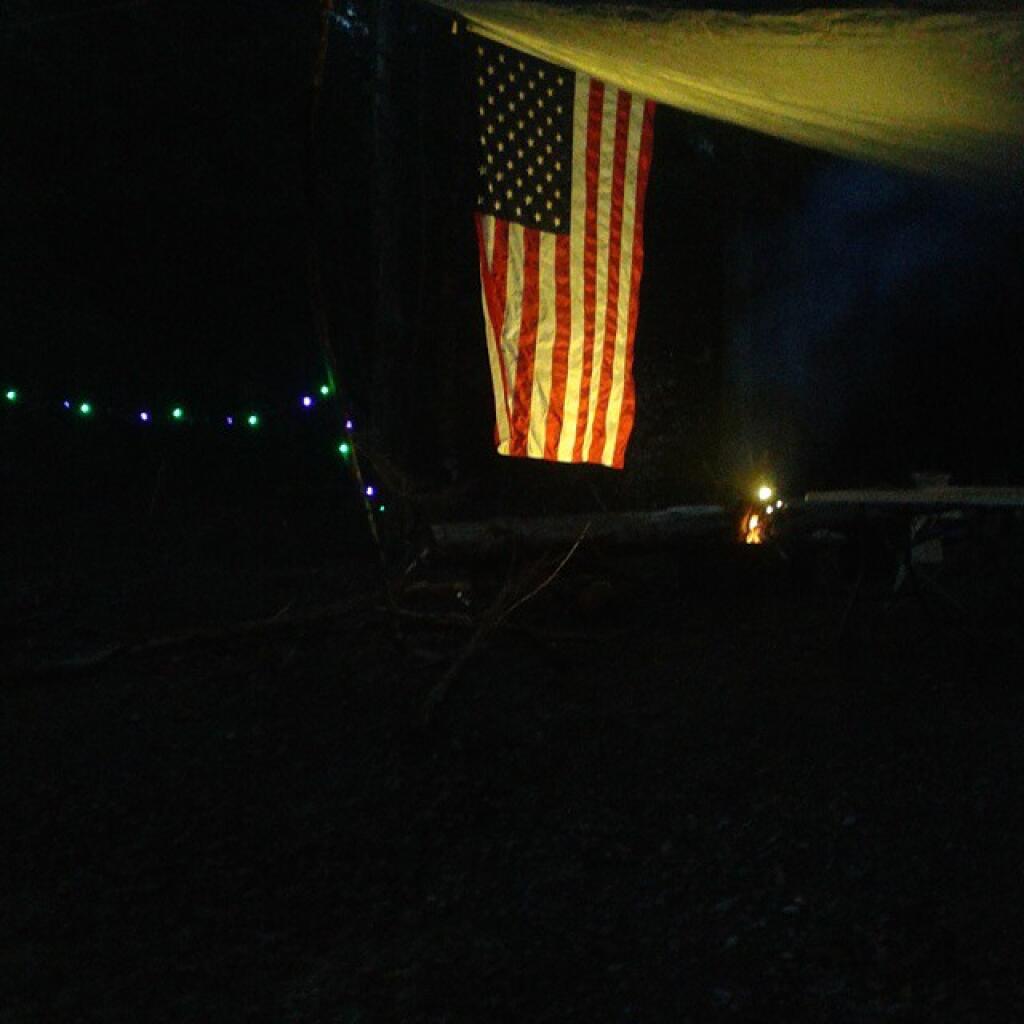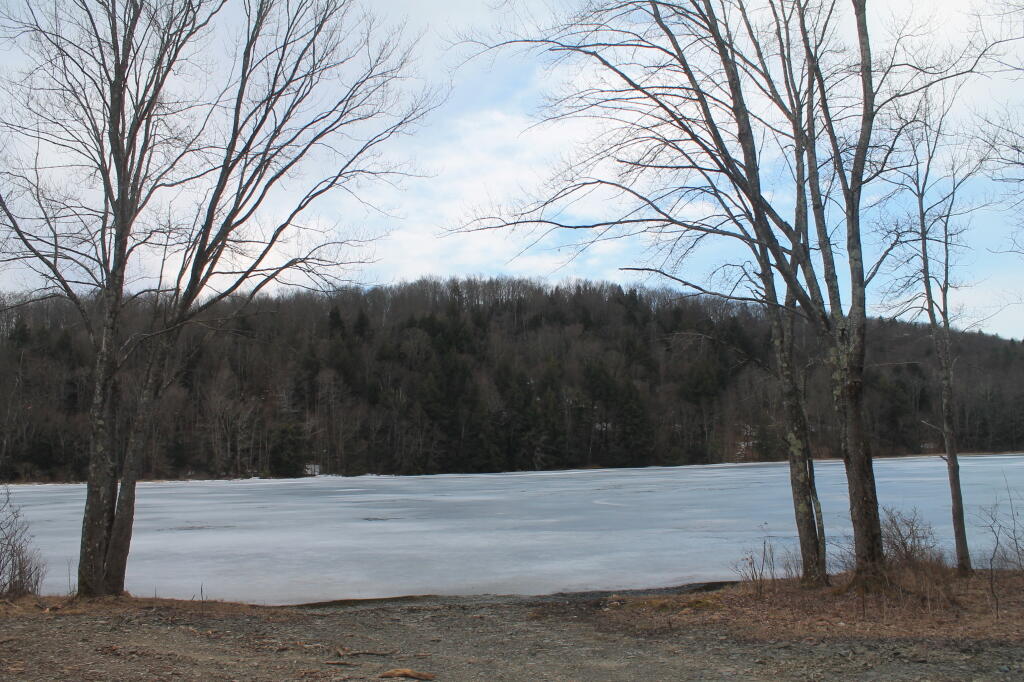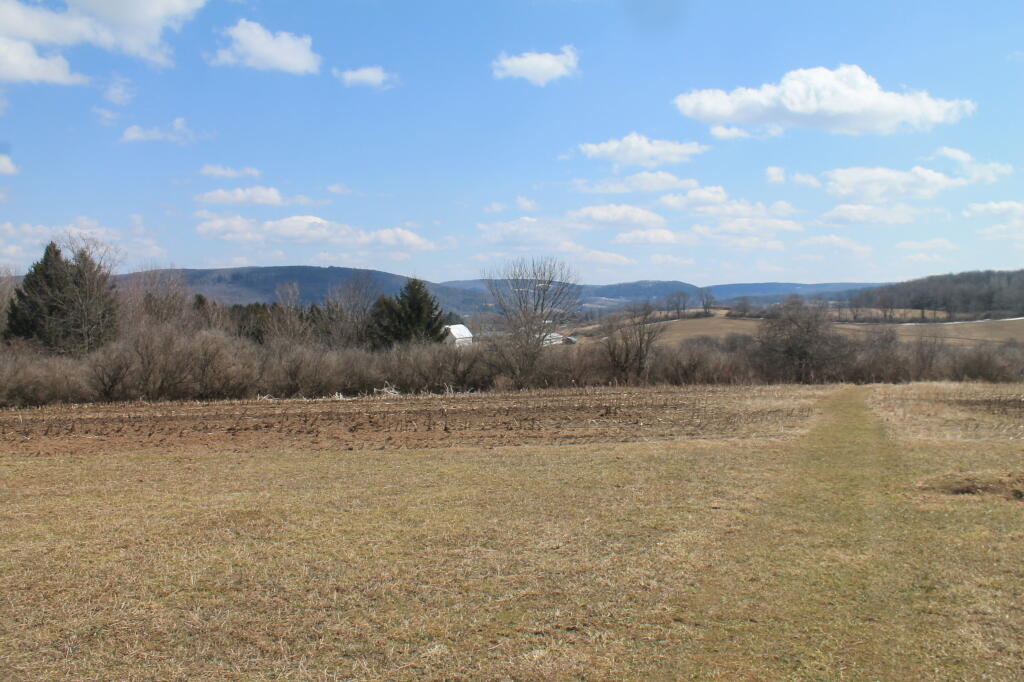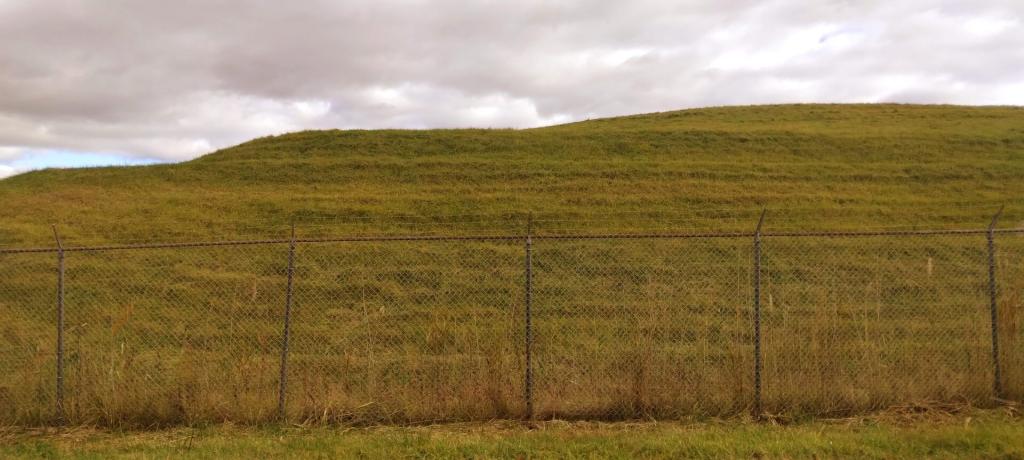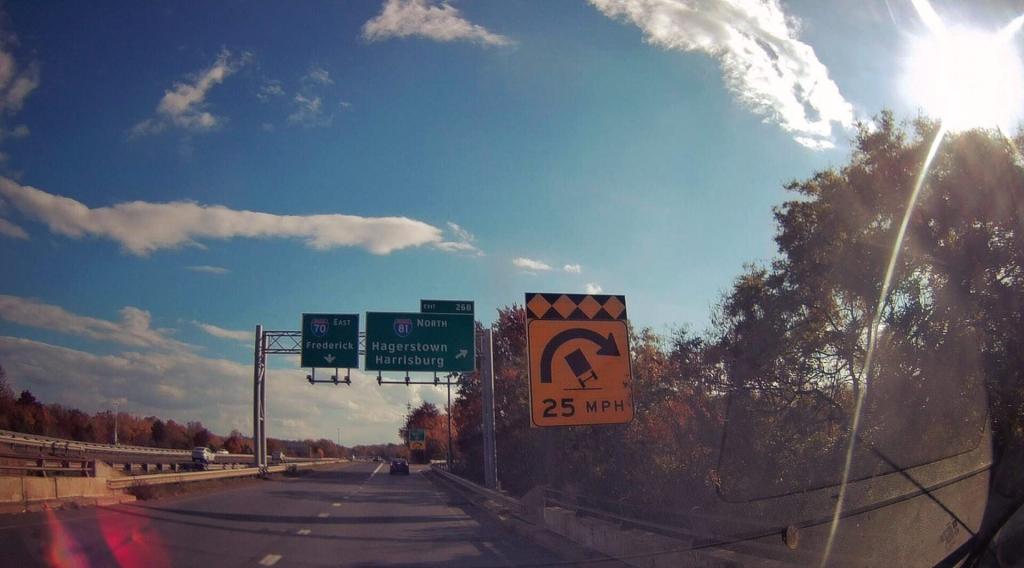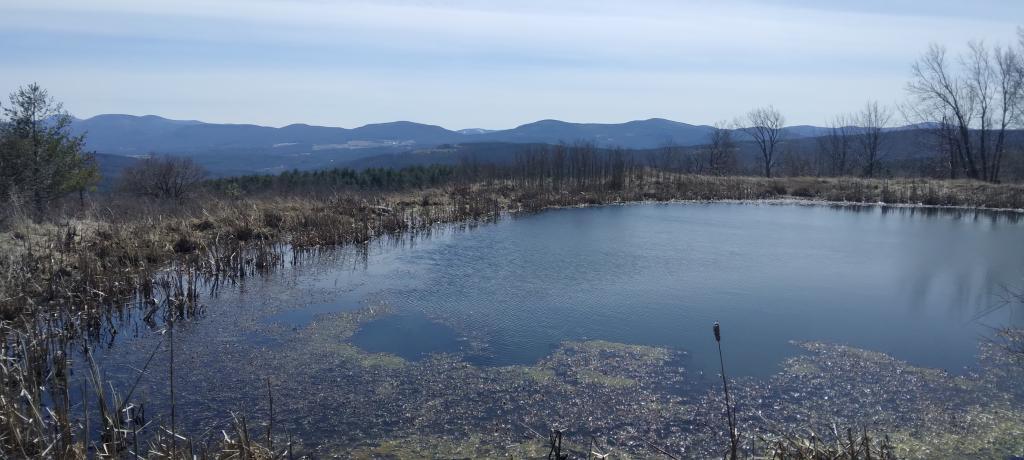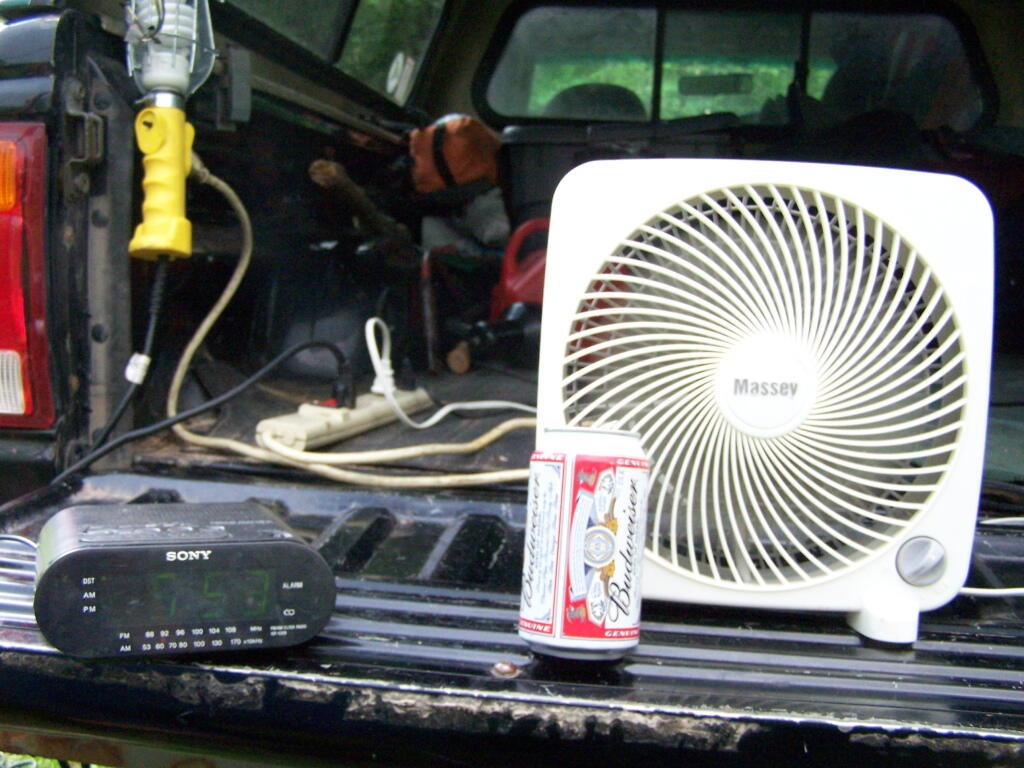Search Results for: photo solar panel camping
Features of My Spring Camping Trip.
While I haven’t packed my truck yet, I am continuing to think through my long-weekend coming up in the Adirondacks.
A few general things I’m thinking about:
Four Nights, Five Days
Based on the current forecast I would leave on Wednesday after work, set up camp that evening, then move camp sometime mid-week, so not be at any one campsite more then 3 nights per DEC regulation. I thought about heading up through the Adirondacks for the park of the week to the St. Regis Canoe Area or even as far north as Deer River and Massena, but that would mean I would end up spending a lot of my trip driving, rather then enjoying the wilderness.
A Few Day Hikes
I would like to do some day hikes. Probably one of the hikes would be back to Auger Falls which is often really raging this time of year, most likely from the backside of the falls. I am also thinking of hiking back the East Branch Gorge Trail, which hopefully this year won’t be icy, or if it does I should bring my ice crapons. I’m also thinking of maybe hiking back along the Oregon Trail which follows the Stewart Creek or maybe hike back to Pine Orchard from NY 8. It would be nice to do at least one hike, where I can walk right from my campsite — so no driving at least or two days. The solar panel should keep the camping battery well charged, especially if it’s sunny.
A Day Around Camp
If I had a nice sunny day, it would be nice to stick around camp for a day, just to sit back, read, study nature. No rush to go anywhere, no camp to take apart or secure. Just relax with a book in the hammock, listening to music. Assuming it’s sunny, I won’t have to worry about the battery, as the panel will continue to charge throughout hte day.
Some Fishing
I haven’t spent much time fishing this year, mainly because I don’t like driving anywhere and I’ve been busy, but it would be nice to see if I can get some good brookies or rainbow. For best result, I would probably be best off to Mill Creek outside of Garnet Lake, although the Sacandaga River might also work, but I doubt it’s been stocked at this point.
First Big Camping Trip of the Year, A Look Back
Every year, I usually kick off the camping season with a big road trip somewhere. Here are some of the trips I’ve done in years past:
2016: Finger Lakes National Forest
April 2016 was a relatively cold month after a relatively warm winter. The first night I camped at Stony Pond in Nelson. It got down to 15 degrees.
I visited the Montezuma Wildlife Refuge then camped off of Chicken Coop Road at the Finger Lakes National Forest.
Rather cold weather up on Hector Backbone, so I strung up tarps to block the wind and built big campfires.
Rather gray as things hadn’t really greened up yet.
But in lower elevations, especially along Cayuga Lake, things where starting to bud up, like as seen with this picture of Taughannock State Park.
2015: Balsam Pond, Long Pond and Chenango County
Rained a bit during the day but camping was great Balsam Pond.
Beautiful sunrise on Balsam Pond.
Nice afternoon fishing on Whitney Point Reservior, but I didn’t get many bites.
2014: East Branch of Sacanadaga River
In 2014, I camped on the East Branch of Sacandaga River. It was a pretty night.
I used my solar panel a bit under the sunny skies to keep the accessory battery charged.
2013: Balsam Pond, Long Pond and Chenango County
In many ways my 2013 trip was similiar to my 2015 trip. I camped at Long Pond, which was very much so still frozen this year.
Hiked up the Berry Hill Firetower.
Visited Rogers Environmental Education Center.
2012: Crane Mountain and Harrisburg NY
Hike both Crane Mountain and Hadley Mountain and camped off of Harrisburg Road in the Adirondacks.
My truck didn’t have a cap then, so I camped in a tent.
It was fun camping in my then new truck.
Started looking at solar power for camping
For some time now, I’ve wanted to learn more about solar electricity. I have read books on it and know how it works in principal, but I have basically no first hand experience as it comes to solar power. At the same time, my electrical load is growing on my truck when camping, especially once I install the CB radio installed in my truck.
 Why I Am Thinking Of Going Solar
Why I Am Thinking Of Going Solar
I hate having to turn on the truck to charge the battery every couple hours, especially when I am sticking around a campsite all day rather then traveling. With higher gas prices this year, due to being an election year, I am thinking of spending more time at a campsite – especially if I do more hunting and fishing this year.
Idling the truck works okay for creating electricity, especially in summer evenings when the darkness is short, and I’m usually not back to camp until 8 or 9 PM. But sometimes when I am hanging out in camp – especially in the morning – it’s a pain to have to start the engine up and listen to the racket it makes, in the quiet of the woods. A solar cell would start charging the battery as soon as the sun rises, and by the time I awoke, the deep-cycle would probably be almost fully charged.
I worry about idling my truck a lot too. Car and truck engines are not designed to idle at a set speed for long periods of time. While engines are a lot better then years past, I’ve always felt it puts a lot of strain on the engine doing this. That said, I had my previous truck until it was 13 years old, and the engine ran fine. I got rid of it because I wanted a new full-size truck and the old one had increased mechanical costs from things like brakes and suspension parts that kept breaking down in the boonies.
I’ve started looking at solar panels, especially in the light of the fact that solar power has come down so much in price. They say it’s about $1 a watt, although for the most part the solar panels I’ve looked at are closer to $1.40-$1.50 a watt. Even at the $1.50 watt price it’s not unreasonable, as I’ve seen several 100 watt panels below $150.
Not only that, but the modern solar panels are mono-crystalline, so they more produce more electricity in less space. The 100-watt mono-crystalline panels I’ve seen have dimensions of roughly 3.5 feet by 2.5 ft. Pretty darn small, especially compared to the amount of energy they generate. Have you ever tried generating 100 watts riding on stationary bike? It’s a lot of work – despite the fact we use incredible amounts of fossil energy in our homes. Even if I get only 50-60 watts out of the panel, that’s still a 1/2 a kilowatt hour per day.
Why I Don’t Use Solar Power Right Now
I’ve pondered solar power on and off. I’ve thought about mounting solar panels on my truck cap, but generally have frowned on the expense and the cost-benefit ratio. The reality is idling my truck to charge up the accessory battery works fairly well, and is low cost compared to driving it there and back.
Most of my energy use is at night when I am at camp for the night, sitting by the campfire, listening to music, lighting up the flag, the decorative lights, and LED lamps for general camp lighting. The sun doesn’t shine at night, so I would still have to use the alternator and idle as the battery runs low. Finding direct sunlight sometimes can sometimes be challenging at campsites far back in the woods. That’s why you have to make sure you have enough wire of sufficient gauge to put a solar panel a far distance away. But at 8.5 amp of current, the wire size shouldn’t have to be enormous.
I also had concerns about mounting the solar panels on the roof of my truck, going through car washes or if trees brushed along the roof top of my soon to be jacked up truck. I also figured it would reduce my fuel economy by wind resistance, canceling out all benefit to mounting it on the roof.
But the main reason I put off going solar, was it just seemed like very little power for a lot of money. Spending like $200 bucks for 5-6 amps of power, didn’t seem like a good use of money, especially when the alternator puts out so much current. However, unlike an alternator the solar panel runs whenever the sun is up, while the alternator only spins when the engine is running – typically 10 minutes every 1.5-2.5 hours.
Solar panel prices have come down a lot lately, and while they produce a lot less electricity then a big gas engine that is running, they produce it all the time when the sun is shinning.
Electricity
The second part of the series I’ve written on Truck Camping deals with the use of electricity and inverters. The first article is about the truck I currently use for camping and my future plans. A third article is coming soon.
A Must Have:
An Inverter for Household Electricity.
No truck camping set up is complete without having access to electricity. Foruntately, we live in an era with inverters, that quietly turn the 12v electricity from your truck’s electric system and battery into household electricity. They make no noise except for a low hum of the cooling fan in the inverter, that keeps the transformer from overheating. The silence is nice compared to noisy, smelly, and bulky gasoline powered generators some people use to power their camping equipment.
Inverters are now inexpensive. I am a fan of the Vector Inverters from Pepboys. I currently use a $75 dollar, 800 watt Vector inverter, which is large enough to power a small dorm-room refigerator or a microwave, although I don’t currently use either one of them. I previously had $35 dollar, 400 watt Vector inverter from spring 2004 to fall 2008, but I replaced it as I thought it was broken, even though the real problem was the electrical line from the truck battery to the inverter had broken, shorting out and blowing the in-line fuse.
Managing Your Battery Load:
Idle Your Engine Every 2-3 Hours for 10 Minutes.
One of the reasons that I bought the 800 watt inverter over the 400 watt inverter was for the built-in Digital LED voltage meter. Few things are more critical when camping, then to ensure you have sufficent cranking battery power to start up your truck in the morning. When the battery voltage gets below 12.0 volts unladen (ie. with your electrical load unplugged), you know you should start the truck up for 10 minutes to ensure the battery charge is maintained.
I’ve discovered that idling the truck for 10 minutes every 2-3 hours of moderate load (50-200 watts draw), ensures your battery remains a strong charge for starting even in cold weather. Their should be sufficent charge at all night for camping, and powering a florescent reading lamp, alarm clock, and other small devices (20-30 watts), although one should always start the truck up 10 minutes before bed to ensure the a sufficent charge come morning. For heavier temporary loads, like running a microwave or toaster, it’s probably best to idle your engine while in use, and few a few minutes there after to ensure a strong battery charge.
The colder the weather the quicker the discharge and the more power you need for starting, however if you keep the battery meter above 11.8 volts, there should be sufficent charge. Most inverters will shut off at 11.7 volts, however, this in many cases is not sufficent power for starting a cold engine, and risks damaging a typical truck starting battery through warping the electrode plates.
We are often educated to think idling a car is wasteful and consumes large amounts of gasoline. Indeed, idling a car without purpose, or even to warm up a car (for the engine’s sake), is wasteful of gas. However, idling to charge a battery uses minimal gasoline, my Ford Ranger uses maybe a 1/4 gallon of gasoline per day camping, just to generate electricity. Modern engines have little drag at idle, and therefore consume minimal energy running the alternator and other equipment when parked.
When in doubt, idle. It’s uses minimal gas and a lot easier then having to jump start in the morning.
Have A Back Up Plan:
For a Dead Battery.
Don’t go alone without a plan in case you have a dead battery in the morning. If your traveling with buddies who also have pickup trucks, then just make sure you have jumper cables. Be aware that smaller cars will not be able to neccessarly provide the power you need to jump start your truck, especially in cold weather due to the amperage requirements.
If your traveling alone, bring another battery to jump start. I currently use a Vector “Hot-Shot” Emergency Battery Jump Starter Kit that I bought for $40. It is a stand-alone battery that you charge in advance, and in case of emergency, you hook the jumper cables built into the “hot-shot” battery to your truck’s battery, providing the extra current needed to turn over your motor.
I currently store the “hot-shot” behind the driver’s seat in the cab. It’s 12 volt trickle charger cord is currently hard wired into the line that provides power from the main truck battery to the inverter. I unplug the “hot-shot” charger cord from the inverter power line when using the inverter, to keep the inverter from robbing electricity from the “hot-shot” when camping. Otherwise, when I’m driving, the “hot-shot” is constantly getting trickle charged at the proper voltage, controlled by the truck’s built in voltage regulator in the alternator.
Previously I had a transformer cord that I used to charge the “hot-shot” at home, but it got accidently destroyed, and I figure it’s smarter to have the “hot-shot” in the truck at all times and persistantly charged.
Future Set Up.
When I get my next pickup truck, a full-size truck, with more room under the hood, I plan to have a second battery installed under the hood. This will be a marine or deep cycle battery, designed to provide longer battery charge for powering the inverter, providing more electricity for longer periods of time. Likewise, due to the thicker plates of a deep cycle battery, it’s unlikely to be destroyed by the use of
The deep-cycle battery will be electrically isolated from the main starting battery using a device called a battery isolator, which is a block of diodes. While the truck’s alternator will provide electricity to charge the deep cycle and starting battery, the isolator prevents the deep cycle battery from stealing electricity from the starting battery.
In addition, I’m considering getting a set of low-cost 50-watt solar panels, to provide about 10 amps of 12vdc power through a solar charger, to feed into the battery isolator when the truck is off. That said, I’m not sure if it’s cost effective compared to simply idling the truck when the battery is low.
I’ve decided to send a check to Protect the Adirondacks 🌲
In related news, I’ve decided to buy a house in Clifton Park with vinyl siding, cathedral ceilings, marble counter tops, grid tied solar panels and a giant picture of Joe Biden in the living room. That sure sounds creepy. I am also buying an electric SUV to drive to work, and to Commissioner Grannis promise I’ll wash out and recycle plastics and not burn them any more.
Good morning on this first day of Trout Season! 🎣 Cloudy and 37 degrees at the Delmar, NY. ☁ Calm wind. Good conditions for getting snookered on the interwebs or hitting the trout hole, although creek levels might be a bit high. Not much sun for shadows at all this week but the river levels will be rising midweek. The skies will clear Saturday around 8 pm.
My pantry is quite bare 🥚 but I managed to cook some eggs with spinach and corn 🍳and bake some bread 🍞 and a big pot of rice and split peas for dinner. 🫘 Got milk 🐮 for my coffee and I should be good ☕ once I go shopping 🛒 tonight after dinner. I also plan to wash the salt off Big Red. 🛻
Today will have a slight chance of showers between 11am and noon. Cloudy 🌦, with a high of 55 degrees at 4pm. Three degrees above normal, which is similar to a typical day around April 6th. South wind 3 to 7 mph. Chance of precipitation is 20%. A year ago, we had mostly sunny skies in the morning, remaining cloudy in the afternoon. The high last year was 74 degrees. The record high of 77 was set in 1986. 5.0 inches of snow fell back in 1924.❄
Probably today is the best weather day of the week for riding to work 🚲 but I’m hoping at least to ride in again on Friday and maybe work the afternoon downtown and catch the bus home Friday. It’s fine, Tuesday evening when it’s raining I’ll bring my laptop 💻 home as I need to work on a few things at home.
Solar noon 🌞 is at 1:00 pm with sun having an altitude of 52.1° from the due south horizon (-18.7° vs. 6/21). A six foot person will cast a 4.7 foot shadow today compared to 2.2 feet on the first day of summer. The golden hour 🏅 starts at 6:45 pm with the sun in the west (271°). 📸 The sunset is in the west (277°) with the sun dropping below the horizon at 7:22 pm after setting for 2 minutes and 55 seconds with dusk around 7:50 pm, which is one minute and 8 seconds later than yesterday. 🌇 The best time to look at the stars is after 8:24 pm. At sunset, look for mostly cloudy skies ☁ and temperatures around 50 degrees. There will be a south-southwest breeze at 5 mph. Today will have 12 hours and 48 minutes of daytime, an increase of 2 minutes and 52 seconds over yesterday.
I got to say I’m glad these days I’m no longer involved in the state budget or the Capitol Hill life. 🏛️It’s nice having my evenings back and not sleeping under my desk or running reports at 2 am. It’s just another ordinary day ahead for me in the data services department. 💾 Run reports, supervise data entry people, talk to the programmers. Fun stuff.
Tonight will be mostly cloudy 🌥, with a low of 37 degrees at 5am. Five degrees above normal, which is similar to a typical night around April 15th. Light and variable wind becoming north 5 to 9 mph in the evening. In 2023, we had mostly clear skies in the evening, which became partly cloudy by the early hours of the morning. It got down to 30 degrees. The record low of 17 occurred back in 1964.
Besides shopping this evening 📚 I plan to do more reading of the e-books I got from the library. It was a bummer that you can’t read e-books more than two days after not having cell service but how often am I that far off the grid except camping at the East Branch Sacandaga River or Piseco-Powley. Most of the time, e-library books really are the way to go especially for the first two days. It’s so much easier to carry books on my phone 📱. Plus no worries about them getting wet or damaged.
After a rainy week some improvements ahead. ☀ Saturday, mostly cloudy, with a high near 47. Sunday, mostly sunny, with a high near 53. Typical average high for the weekend is 55 degrees. Not terrible for early April but still a bit cool. The following week might really feel spring like. But this weekend I’ll probably stay in town.
Not sure when my next trip will be ⛺ but not this weekend. I might do Charles Baker in Madison County come later April or Burnt-Rossman in Schoharie. Lower elevations will see spring first. 🌸 All depends on how much it warms up next week. I wouldn’t mind taking off another Friday.
Looking ahead, there are 2 weeks until Tax Day 💰 when the sun will be setting at 7:39 pm with dusk at 8:07 pm. On that day in 2023, we had partly sunny skies and a nice warm day with a thunderstorm and temperatures between 84 and 52 degrees. Typically, the high temperature is 59 degrees. We hit a record high of 86 back in 2003. I’d take weather like that for reading down at the park.
Keeping moving forward 👣
One of my fears is that I will get stuck in the process of buying land and building a cabin on it. In many ways, it’s a much more complicated and drawn out process then simply looking at a house, going through a well established path of real estate agents, title searches, house inspection, and traditional mortgage but it also turns out not to be an impossible project without many construction skills or equipment.
In some ways buying raw or minimally developed land (such as an old trailer site or badly damaged home with some infrastructure), especially with cash is a much harder road to hoe. While I haven’t totally written off getting a mortgage — there are tax benefits, namely you can reduce your total income by the amount you pay in mortgage interest — the cost of money these days makes it seem like a waste. And I worry about getting ripped off, and regulatory issues more generally as all of this world is very new and complicated to me. I’ve always preferred to pay with cash, it’s generally cheaper though it will involve cashing out stocks and paying a shit ton of Capital Gains taxes.
Where I am today
Right now I am at the stage at studying parcels that are currently on the market and giving it some thought. What is out there without a home? What are the prices? How far from work? How close to neighbors or potential neighbors who could complain about things to the town? Since drafting my first draft of the homestead and cabin on Saturday, I think I have a better idea — the priority being having the right redneck kind of neighbors, general distance from neighbors, ability to homestead with livestock and have bonfires, ride an ATV around the property, heat with wood, compost, garden and use on-site solar to avoid being tied to growing expense of the dirty power of the electrical grid. Buy and build what I actually want, even if that’s somewhat more expensive then I’d like to spend and not what other people want from the property.
I’m teaching myself LibreCAD so I can draw my vision for the home and the property that I want in a way that is presentable to potential sellers or their real estate agents, town building officials, and architects. I am not a very good hand drawer, and knowing at least some CAD and floor plan design drawing techniques will be good to illustrate my vision to the appropriate people. While I am sure not all of my ideas can be implemented due to regulatory and cost reasons, being able to have a clear idea of what I want on paper, in an easily readable form will make it much easier to obtain what I want.
Maybe the best way to judge my progress is to have a rough time table :
Going forward
- Late Winter 2024
- Apply for conventional mortgage to learn more about the process, see what credit resources are available and investigate conventional properties in rural areas sold by conventional realtors.
- Read library books on the process of buying a home
- Start the conversation with friends about what their experience is on buying rural land and homesteads, what resources they used, what contractors and banks they utilized
- Draft up on paper what I am thinking I want my “practical dream” homestead and house would like so I can present my idea to various friends, colleagues, realtors, and town officials.
- Change from buying additional stock to saving in an a high-interest savings account
- Spring 2024
- Turn my paper draft of what my “practical dream” homestead into a CAD project that I can present to others to get feedback.
- Learn more about the process of building a home by reading and talking to people, specifically the process of working with an architect, getting town approval, selecting a quality, reliable contractor.
- Learn more about building materials and methods, including what is the latest in affordable off-grid solar.
- Continue to study properties on the market and tax records, write code to analyze the pros and cons of various properties.
- Grab the latest list of tax-delinquent properties from the county, match against county tax maps and records, and see if there are properties worth pursuing. Write owners listed on tax records via certified mail.
- Drive the back roads, looking for abandoned or vacant properties then pulling up their owners from the tax records, searching to the internet to see if the owner passed away or what the story is about the reasons for being abandoned. Write owners listed on tax records via certified mail.
- Summer 2024
- Develop a list of properties that meet my desired criteria and have been preliminarily vetted using publicly available GIS data like tax maps, LiDAR, orthophotography — new and old. Run my analysis code on the slope and direction of the land, along with consulting DEC wetland maps, distance to other properties, especially other homes, and other potential nuisances such as junk yards, barnyards, dumping grounds.
- Reach out to property owners and realtors to confirm the property is still available and to get tours of the land, sharing my vision for the land.
- Work with an architect to draft plans for the cabin
- Develop a short list of contractors to build the home
- Develop a short list of companies to drill the well, put in the road/improve the road, put in the septic tank and leach field
- Meet with town officials to discuss my vision for the property, including showing a draft architectural drawing, or at least my own concept
- Fall/Winter 2024
- Work to close the deal on the land after title searches, consulting with a real estate lawyer, getting the land perc tested for septic, speaking to neighbors about their experience with drilling wells and other potential nuisance concerns with the land, such as something they’ve heard about the land like dumped toxins or flooding that is non-obvious from public records and GIS data.
- Do not renew my certificate of deposit but keep those funds in a Savings Account, possibly start cashing out some of the stocks and bonds I have saved, reserving funds to cover Capital Gains taxes.
- Try to close the deal on property, paying with cash if possible. While I will have to pay a full year’s worth of taxes on the undeveloped property, having it on the bag with tentative approval for the cabin for plans would make it worth it.
- Potentially have some infrastructure work done on the property — improving the road, water well, septic, etc. Might make sense to wait until the new year due to delay Capital Gains tax hit.
- Late Winter/Spring 2025
- End my lease for the rented apartment and move out onto the land, camping or using my truck camper (assuming this is allowed — it’s possible at that point that Big Red will be replaced but can be taken off the road, used for hauling gear around the site and camping out of).
- Live on the land, getting to know it well. Maybe get chickens and rabbits for eggs and mea, a shed to store things including the well pump and gasoline generator.
- Have finished the infrastructure improvements, especially the driveway/roadway to cabin, site foundation.
- Work on getting the septic and water put in.
- Work with contractor to get town permits secured to build the cabin.
- Summer 2025
- Work with the contractor to have the cabin built to the point it’s habitable with water and septic and plumbing but not fully complete inside, work with building inspector to get certificate of occupancy based on minimal legal completion
- Get the cabin to the point where it’s waterproof and secure, start to move inside
- Fall/Winter 2025
- Get woodstove and propane heaters professionally installed and up to code
- Have cabin fully insulated and ready for winter so pipes don’t freeze and I have a comfortable place to spend the winter
- While I don’t anticipate having the solar done at this point, I can string up extension cords from the gas generator, a few small solar panels and batteries, use small portable lighting through the winter — rather live “without electricity” for a winter to really get to know the land and spread out the tax costs
- Finalize the design of the solar equipment, inverter, and batteries
- Work on completing parts of the interior such as flooring and walls, working with an electrician to do the breaker box, while doing some of electrical wiring myself with review of the electrician and town building inspector.
- 2026
- Have internal electrical wiring and fixtures finished and approved by the electrician and building inspector.
- Obtain, mount and install solar panels, inverter, batteries.
- Work to complete inside walls and flooring
- Secure a full-size, energy efficient 120 volt refrigerator and full-size gas oven and range for the kitchen
- 2027
- Add additional solar panels to the system
- Add a chest freezer for storage of meat in unheated shed or building overhang
- Build a shed or small barn, start adding goats and/or maybe hogs to the homestead
- Various site improvements
